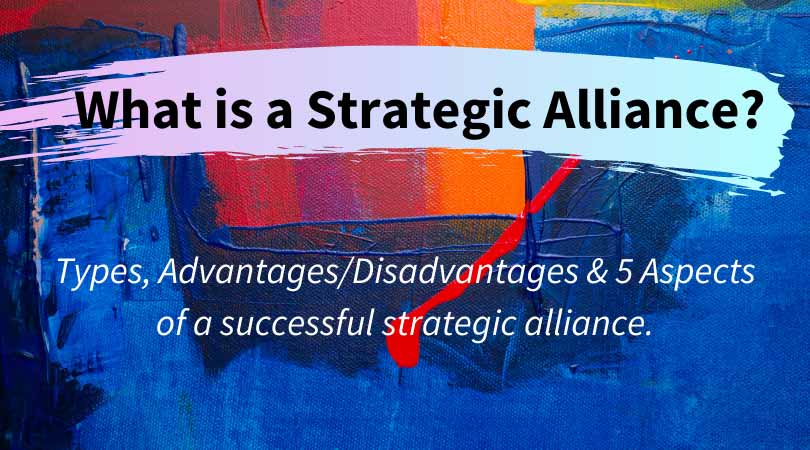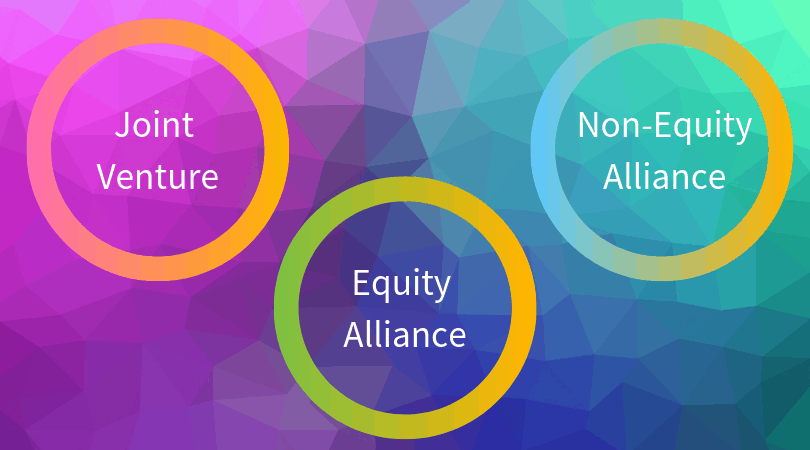
Alliances and partnerships are a key staple in business strategies for organizations large and small. But while many partnerships begin with big visions and aspirations, not all alliances turn out to be strategic.
In the last few months, I have seen various new alliances being formed among top companies of the world.
But, what is a strategic alliance, what are the types of strategic alliances, how can they be a boon—or a burden—to your company, and why are they now mandatory for success in today’s marketplace?
Let’s dive into it.
Three Different Types of Strategic Alliances
Alliances are business relationships. They’re about who you know in business, and like a personal network, they supplement your capabilities and weaknesses with strengths. Each alliance is a joint venture where two or more entities work together to achieve a shared goal while remaining separate and independent.
A strategic alliance goes a step further. Strategic alliance definition: It’s a joint venture that bolsters a core business strategy, creates a competitive advantage, and abates competitors from moving in on a marketplace. It allows individual companies to achieve more together than they would have on their own.
In other words: Coopetition.
Strategic alliances can take many different forms, but they often fall into three categories:

Each of these types of alliances is selected based on the scope and needs of the goal. Just like choosing partnership organizations is mission-critical, selecting the right type of partnership can mean the success or failure of a project.
According to the Ivey Business Journal, a strategic business alliance needs five key components to be successful.

A successful strategic alliance:
- It is critical to the success of a core business goal or objective.
- It is critical to the development or maintenance of a core competency or other source of competitive advantage.
- Blocks a competitive threat.
- Creates or maintains strategic choices for the firm.
- It mitigates a significant risk to the business.
If these things exist in the partnership, both organizations benefit from a symbiotic relationship that drives the business forward, staves off competition and threats, and establishes leadership in the marketplace.
As more and more businesses build their partner ecosystems, companies that do not actively build and maintain these relationships will flounder on their own, without the tools to be competitive in a global market.
Advantages and Disadvantages of Strategic Alliances
Advantages of strategic alliances
- Sharing resources and expertise. A strategic alliance should combine the best both companies have to offer. This can be a deeper understanding of the product, sales, or marketing knowledge, or even just more hands on deck to increase speed to market.
- New-market penetration. In some cases, a strategic alliance gives access to new markets with a solution that wouldn’t have been possible for either company on their own. For instance, companies going global often work with a trusted local partner to get an advantage in an emerging market.
- Expanded production. When it comes to manufacturing and distributing products, strategic alliances allow partners to increase their capabilities and scale quickly to meet demand.
- Drive innovation. With the right alliance, partners can outpace the competition with new solutions that are a complete package for their customers. These alliances are creative and revolutionary and change the market landscape in a dramatic way.
Strategic alliances allow partners to scale quickly, build innovative solutions for their customers, enter new markets, and pool valuable expertise and resources. And, in a business environment that values speed and innovation, this is a game-changer.
Disadvantages of strategic alliances
- Loss of control. In an alliance, both organizations must cede some control over how their business is run and perceived. A strategic alliance requires honesty and transparency, but that trust isn’t built overnight. Without significant buy-in from both parties, an alliance may suffer.
- Increased liability. In a joint venture or equity strategic alliance, both companies are on the hook for the outcome. If something happens to stall production or create unhappy customers, both partners are at risk for the loss in reputation. For instance, in the case of Tesla and Panasonic, what was originally an advantageous relationship became fraught when batteries weren’t produced and shipped quickly enough, causing delays in Tesla vehicle production and shipments. Reports now say that Tesla is putting its capital behind building its own battery technology to reduce dependence on Panasonic.
Strategic alliances can fail when partners misrepresent what they bring to the table, do not fully commit to the partnership, or fail to bring their resources together effectively.
Future Success of An Organization Counts On The Value Strategic Alliances & Ecosystem
According to Accenture, 76% of business leaders surveyed agree current business models will be unrecognizable in the next 5 years. Ecosystems and strategic alliances will be the main change agent.
Every industry is susceptible to disruption, and business leaders must look in unlikely places to get the edge they need to keep their organizations relevant and thriving. Blurring the lines between competitors and industries is key to entering new markets and bringing new products and services to the market quickly.
But, true strategic alliances take efficient management to realize their true potential, and given the time and energy required for traditional partnerships, this is harder than it sounds. Choosing the right partner for the right project requires deep insight into partner sales, marketing, and project data as well as an understanding of their customers and the whole solutions they're looking for.
With strategic partners, corporations can tap into a nearly limitless marketplace of ideas, resources, and knowledge that would be impossible in a solo venture while avoiding the pitfalls that lead to failed partnerships and unrealized potential.
Heading
Heading 1
Heading 2
Heading 3
Heading 4
Heading 5
Heading 6
Lorem ipsum dolor sit amet, consectetur adipiscing elit, sed do eiusmod tempor incididunt ut labore et dolore magna aliqua. Ut enim ad minim veniam, quis nostrud exercitation ullamco laboris nisi ut aliquip ex ea commodo consequat. Duis aute irure dolor in reprehenderit in voluptate velit esse cillum dolore eu fugiat nulla pariatur.
Block quote
Ordered list
- Item 1
- Item 2
- Item 3
Unordered list
- Item A
- Item B
- Item C
Bold text
Emphasis
Superscript
Subscript





.png)